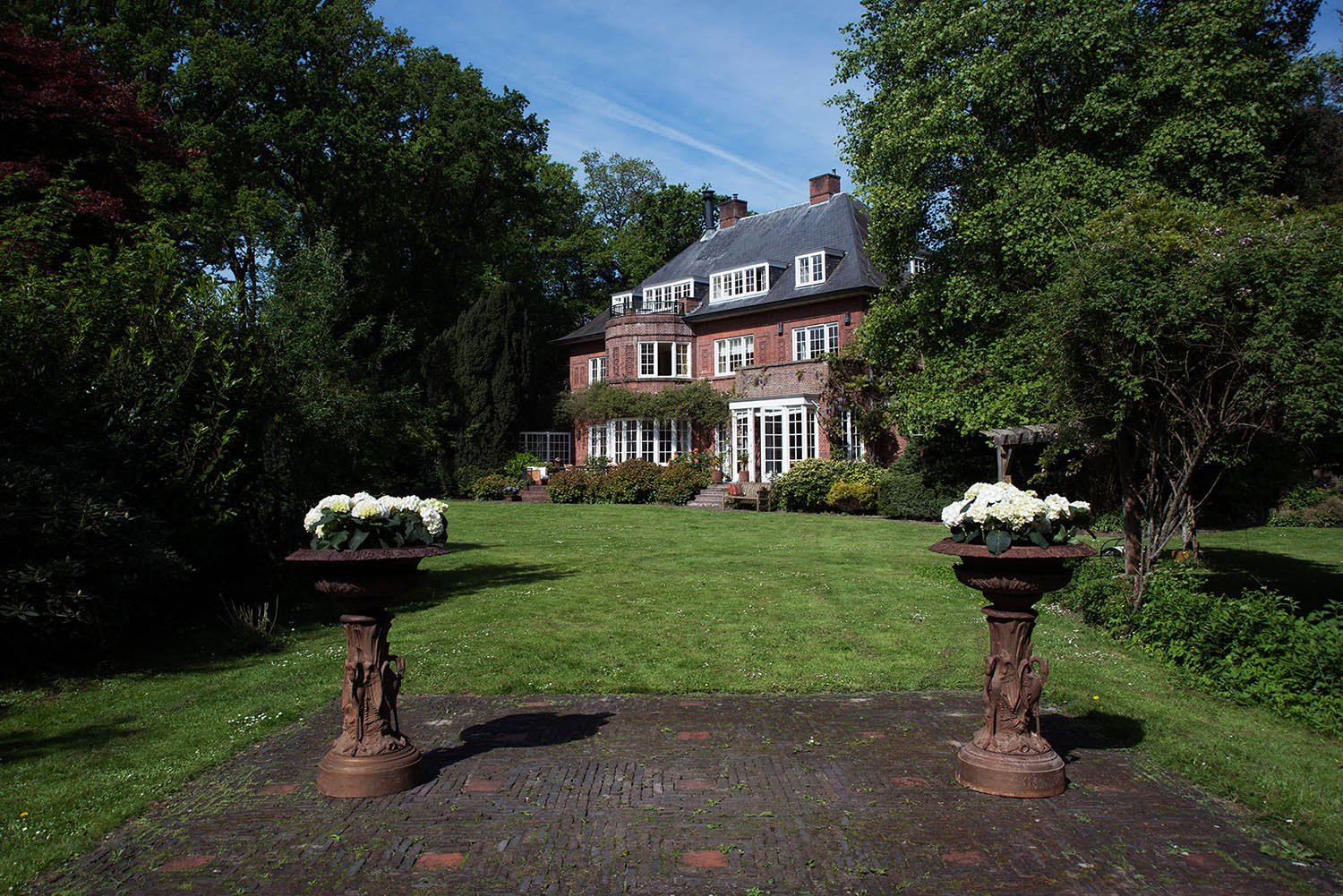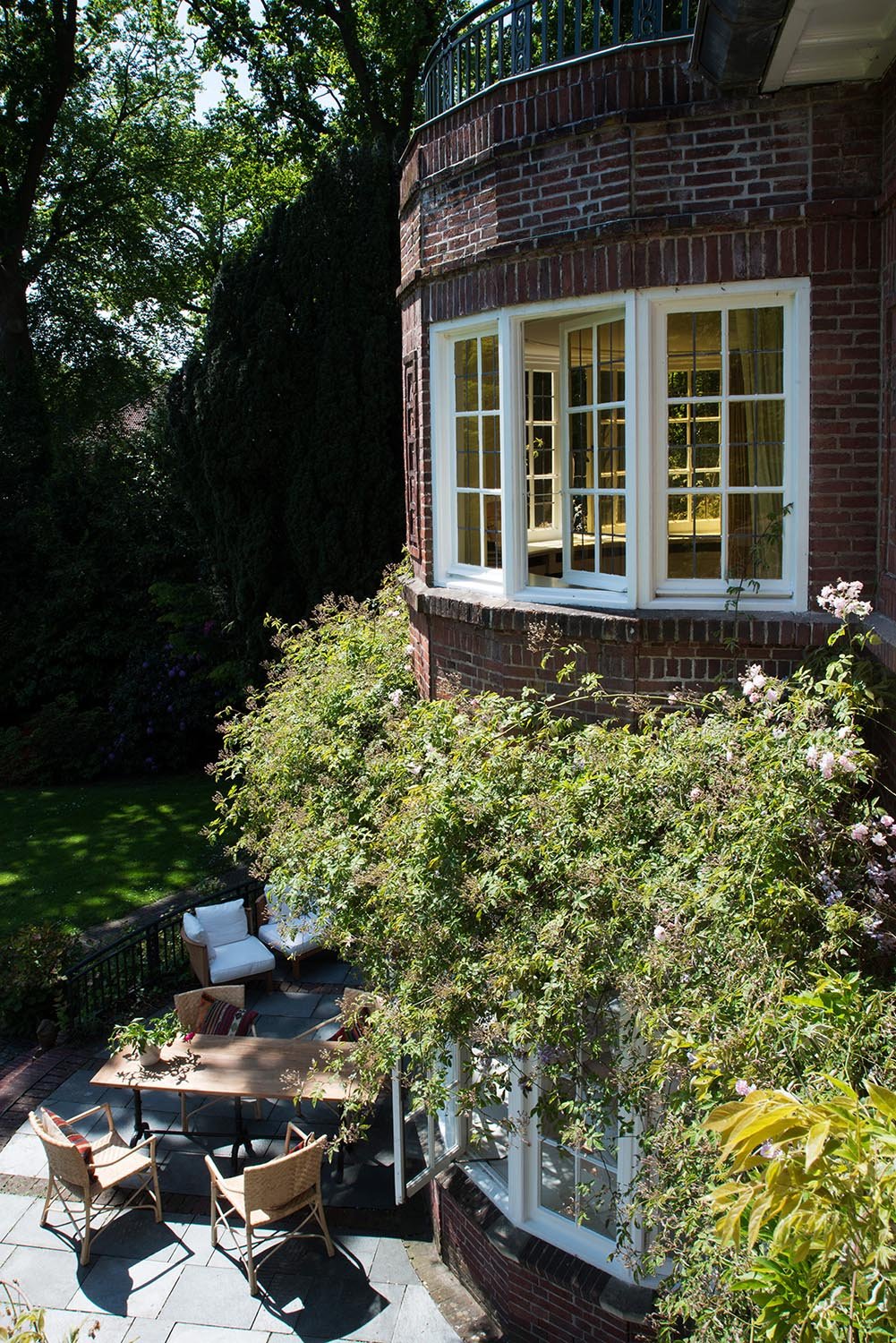VILLA DE ROEMER
No architect defined the face of The Hague and Wassenaar during the Interbellum as much as Co Brandes (1884-1955), strongly influenced by the work of Frank Lloyd Wright.
“Villa De Roemer has something of the horizontal effect and the hoods protruding outside the façade that also characterise Wright’s work. At the same time, with the round bay windows, there is something typically English in it. Villa de Roemer therefore occupies an important place in Brandes‘ oeuvre: it is an important link in the emergence of the New Hague School, perhaps the finest style produced by The Hague” says architectural historian Dr Pieter F. Vlaardingerbroek in his introduction of the villa.
Concert pianist Paul Roes
In the years 1915-1916, Villa de Roemer was constructed for the cousins Roes. Paul Roes (1889-1955) was a celebrated concert pianist who resided in Paris from 1929 onwards, accompanied by his wife and impresario, Eeke Houwink. His cousin, Louis Emile Roes, was wed to Maria Hoogeweegen. Their fathers jointly managed a law firm. The two cousins hailed from a prosperous family of tanners in Wageningen, from which the NV Wageningsche Lederfabriek vh J.B. Roes en Zonen originated. Evidently, this enterprise generated sufficient capital to erect a fine house in Wassenaar.
The edifice comprises two storeys beneath a high hipped roof. The brick façades are adorned with decorative masonry. Above the entrance portico, the villa’s name is inscribed: DE ROEMER. This architectural ceramic work was crafted by the renowned W.C. Brouwer, who fabricated such materials in Leiden and supplied notable buildings such as the Peace Palace in The Hague.
Roemer
A Roemer (also known as a Römer or Rummer, among other variations) was a type of large drinking glass commonly used for wine, studded with prunts to ensure a safe grip, popular mainly in the Rhineland and the Netherlands from the 15th through the 17th century.
The residency of the Roes family was brief, as the property was sold in 1920. The new proprietor was Friedrich Wilhelm Theodor Carp, married to Anna Petronella Mees. He was a partner in the Rotterdam wine merchant Carp & Co, and his wife hailed from a highly respected family in Maasstad. The villa’s name seemed more fitting for Carp than for the Roes family.
Presently, the house is famed as the work of architect Co Brandes (1884-1955). Though born into a modest family, his talents as a draughtsman were swiftly recognized. From 1902, he worked at the architectural firm Hoek and Wouters, transitioning in 1908 to the Haarlem office of J.A.G. van der Steur, known for his contributions to the Peace Palace, designed in 1907 by French architect L.M. Cordonnier.
Brandes’ disappointment was profound when he was not permitted to assist in the construction of the Peace Palace. He returned to Hoek and Wouters, becoming the designing architect in 1912. Brandes could produce designs in Renaissance style, late Jugendstil, or whatever was required. He soon became active in Wassenaar, where the affluent Rotterdam elite preferred to build houses in the woods. This natural setting called for a different architectural style, influenced primarily by England and America.
Frank Lloyd Wright
Villa construction flourished here, and knowledge of it spread throughout the Netherlands via publications. The esteemed architect H.P. Berlage traveled to America and extensively reported on the works of Frank Lloyd Wright. Jan Wils, who was a close friend of Co Brandes, worked in Berlage’s office in The Hague. Together, they became pioneers of the Nieuwe Haagse School, heavily influenced by Wright’s work.
This influence is evident in the villas in Wassenaar from the 1910s. Villa De Roemer exhibits horizontal lines and overhanging eaves typical of Wright’s style. Simultaneously, the round bay windows evoke a distinctly English character. Thus, Villa De Roemer holds a significant place in Brandes’ oeuvre: it is a pivotal link in the emergence of the Nieuwe Haagse School, arguably the finest architectural style produced by The Hague.







































